FEATURES|COLUMNS|Coastline Meditations
Sing Me A Song: The Impact of Screens on a Remote Bhutanese Mountain Village
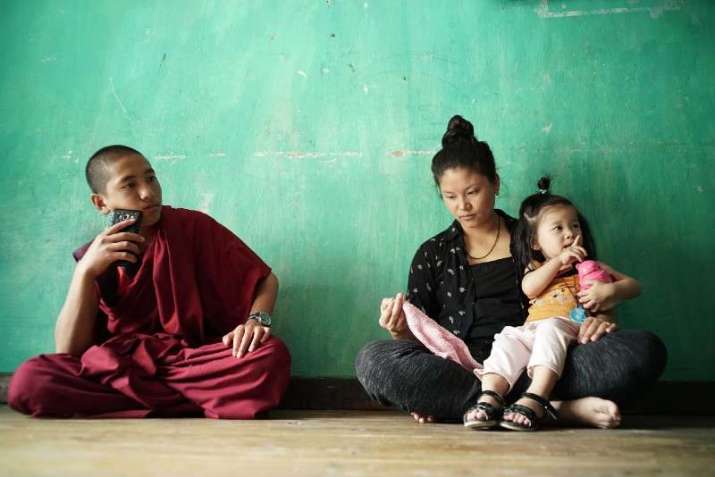 Peyangki with Ugyden and her daughter. Image courtesy of Participant
Peyangki with Ugyden and her daughter. Image courtesy of ParticipantSing Me A Song is a new documentary film by French director Thomas Balmès that explores the ways in which rapid technological development has impacted the remote mountain village of Laya in Bhutan. The film, which received rave reviews after it premiered at the 2019 Toronto International Film Festival (TIFF), was released to the wider public on 1 January this year and it is available on US cable networks as well as on iTunes, Amazon, Prime Video, VUDU, Google Play, YouTube, Microsoft, and Vimeo.
While the documentary is considered by many to be a sequel to Balmès’ 2013 film Happiness, which won a cinematography award at Sundance, the director shared with Buddhistdoor Global that he first traveled to the region specifically to document the impact that screens (i.e. televisions, computers, and smartphones) can have on a population that has never been exposed to these technologies. However, the advent of electricity was unexpectedly delayed, forcing Balmès to approach his project from a different angle.
“It was only due to weather conditions there that did not allow the arrival of electricity that made Happiness what it is, a film about a young monk waiting for the electricity to arrive,” Balmès explained. “I don’t consider Sing Me A Song to be a sequel to Happiness—I would say that my original plan for the film was Sing Me A Song, and Happiness was the prequel.”
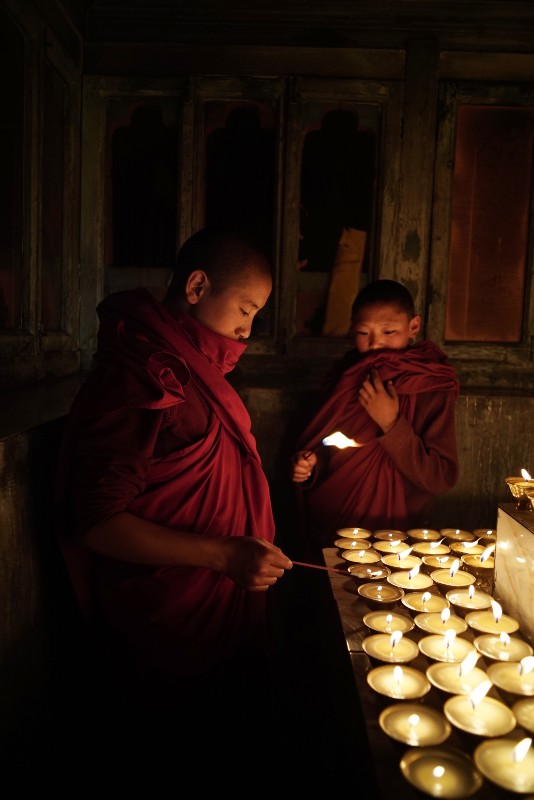
Peyangki lighting candles at the monastery.
Image courtesy of Participant
Sing Me A Song opens with shots of eight-year-old-monk Peyangki, taken by Balmès 10 years prior. The mountainous landscape in which young Peyangki frolics is stunning, and his commitment to being a monk is also impressive. Flash forward to the present day, and the effects of modern technology on a region that was shielded from it until recently are immediately apparent: smartphones seem to permeate every single aspect of life at the monastery, with Balmès capturing footage of boys entranced by their devices from the moment they wake up, as they chant and carry out other religious and daily activities, up until bedtime, when all that can be seen are faces staring gormlessly into the blue glow emanating from their devices.
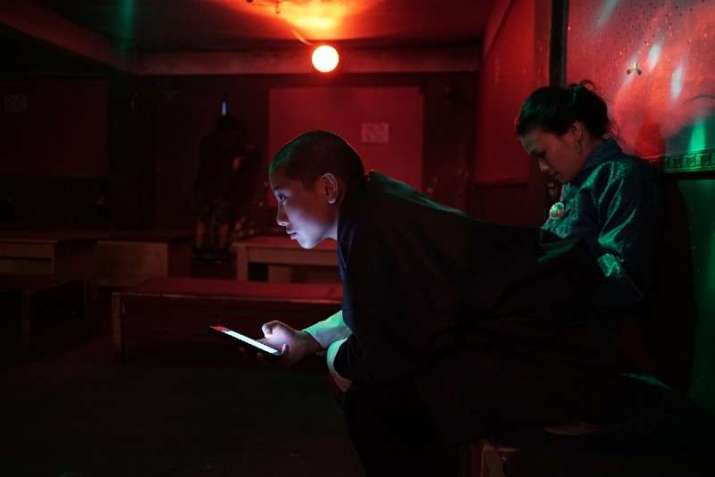 Peyangki at a night club in the city. Image courtesy of Participant
Peyangki at a night club in the city. Image courtesy of ParticipantThe notion of innocence lost is particularly stark when a group of boys, adorned in religious garb, are filmed role-playing war with a large arsenal of toy guns. And our protagonist Peyangki further highlights a significant shift in values: now a young adult who is greatly distracted by the temptations of the modern world, he experiences significant doubts about his decision to live the secluded life of a monk. He has a girlfriend whom he met online, and like many of his peers, does not seem able to put down his phone to study, which leads his teacher to scorn his lack of dedication and focus.
Instead of heeding his teacher’s advice, Peyangki leaves the monastery for the capital Thimphu, where he meets up with Ugyen, his mysterious online girlfriend. While eight-year-old Peyangki daydreamed of one day seeing skyscrapers and aircraft, city life does not live up to the hype: not only does he find out that his online sweetheart was dishonest with him—she is older than he thought and has a young child—but he seems apathetic to his new environment and spends extended periods of time playing video games in dimly lit internet arcades. Add to this a visceral musical score by Nicolas Rabaeus and the result is unnerving. Yet it is against this harsh backdrop that Peyangki’s humanity is emphasized, giving way to incredibly intimate moments such as when he looks away from his love interest and sheds a few tears.
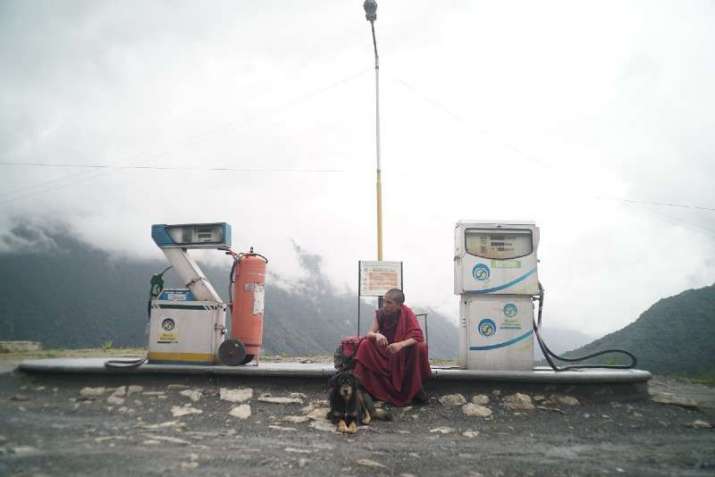 Peyangki at a gas station in the city. Image courtesy of Participant
Peyangki at a gas station in the city. Image courtesy of ParticipantAccording to Balmès, the project naturally allowed him to capture such moments: “When you spend 10 years following the same person, you develop some very special relationships with them. And a very unique trust can develop. For me, the basis of everything is that I try not to manipulate things and that I don’t have a plan in my head beforehand. I just let things develop the way they do.”
As a whole, the film certainly reflects the director’s methodology and it comes across as a “show, don’t tell” narrative, thereby allowing the audience to come to their own conclusions about the tremendous transformation of the region over such a short period of time. That said, the sheer magnitude of footage in which individuals are entranced by their devices can feel very deliberate at times, such as when Peyangki reminds his friend that the television is still on as they go to bed and they ultimately decide not to turn it off. Can it really be that these young people are hooked to the net 24/7? The answer, probably, is yes. And although Sing Me A Song is very specific to Bhutan’s situation, it also raises questions that are universally pertinent in this age of globalization, the main one being: what values are being cast aside in our unabashed embrace of technology, and are we willing to continue along this path?
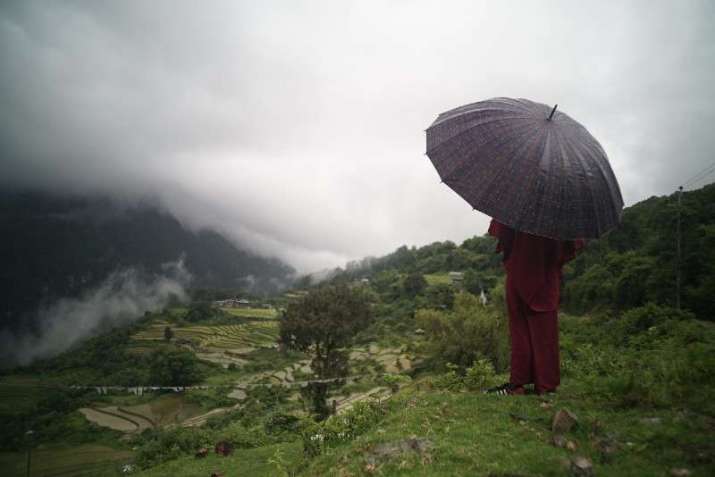 Peyangki on a mountain near the monastery. Image courtesy of Participant
Peyangki on a mountain near the monastery. Image courtesy of ParticipantSee more
Film Review: ‘Sing Me A Song’ (Variety)
'Sing Me a Song': Film Review (The Hollywood Reporter)
Sing Me a Song (Participant)
Related featuers from Buddhistdoor Global
Would the Buddha Be on Facebook?
Magic
The Wisdom of Grief and Anxiety – Building a Life of Meaning Outside of the Social Media Trap
Shifting Trust in the Age of Fakery
The Path of Practice in our Digital Age
Buddhistdoor View: “Hyper-mindfulness”—An Urgent Buddhist Response to the Age of Social Media
The Unskillful Use of Social Media
Right Speech in the Internet Age: If You Have Nothing Nice to Say, Say Nothing at All














